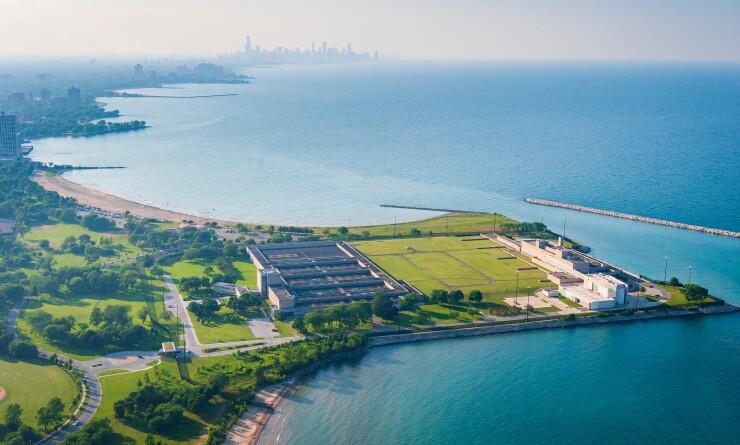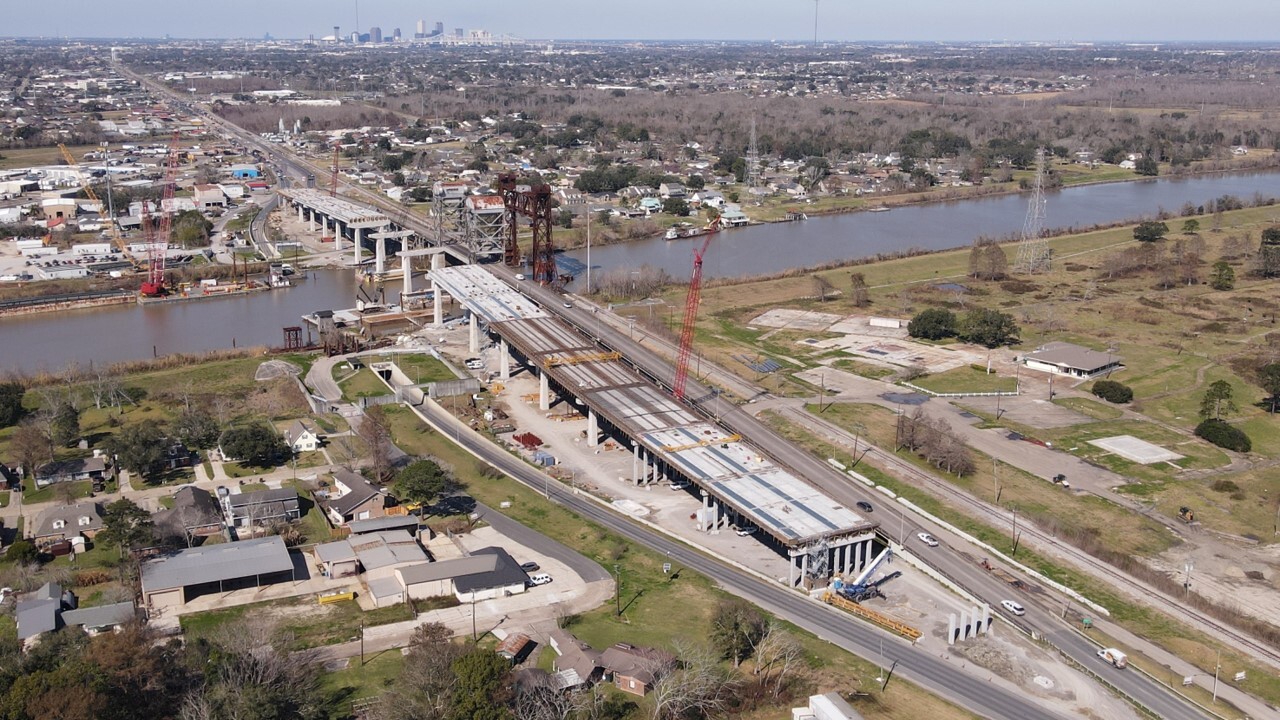Every state in the Midwest has clean water and drinking water financing programs designed to help municipalities build infrastructure for safe water. But there are signs that those financing mechanisms may face greater strain in the years ahead.
Already, citing "historically high requests for financial assistance," Wisconsin has capped applications to its Clean Water Fund Program and Safe Drinking Water Loan Program for fiscal 2024.
"We expected that there would be an increase in the amount of funding requested; we didn't anticipate that it would be nearly as significant as it was," said Matt Marcum, supervisor of the

On the clean water side, he said, the program saw a 90% increase in the amount of funding requested, with average annual requests going from $220 million a year to well over $500 million. The drinking water program saw a 280% increase in the amount of funding requested over the previous year.
Part of the reason was a backlog of projects that got delayed during the COVID-19 pandemic. Then, when Bipartisan Infrastructure Law funding became available, local governments saw an opportunity.
But there has also been an increase in need to combat emerging contaminants such as perfluoroalkyl and polyfluoroalkyl substances, or PFAS, Marcum said.
"In talking with other states, I think most of them have seen a pretty significant increase in demand for funding," he said.
Wisconsin has had to set limits again in fiscal 2025, he said.
"I don't expect that we will have enough loan capacity to fund all 2025 applications," Marcum added. "I think demand is going to remain high… Without an increase to the revenue bonding authority for the program, I don't think that we'll be able to meet demand for the next three years."
PFAS are highly concentrated in parts of the Midwest — specifically, Wisconsin, Ohio, Illinois, Michigan and Minnesota — and there are many areas where their levels are above the proposed limit in Wisconsin, Ohio and Illinois,
The Bipartisan Infrastructure Law,
Some states, including Wisconsin, have transitioned from using direct loan programs to leveraged loan programs to finance their clean water and drinking water programs.
Wisconsin's direct loan program relied on general obligation bonds issued by the state. In 2016, the state began operating a leveraged program using the proceeds of state Environmental Improvement Fund revenue bonds, with debt service on those bonds paid from the SRF loan and investment loan repayments. The state buys the GO or revenue bonds of local governments to finance their water infrastructure projects; those loans typically have a term of 20 years, according to the Clean Water Fund Program's 2023
The program was restructured in 2016 in part to acknowledge its growth, Marcum said, and also to eliminate the need to use GO bonds repaid with state general purpose revenues. Today, the Environmental Improvement Fund has 199 outstanding loans.
Iowa is another example. The Iowa Finance Authority in June issued $206.95 million of State Revolving Fund revenue bonds, Series 2024A, to fund loans through the Iowa Water Pollution Control Works Financing Program and the Iowa Drinking Water Facilities Financing Program. Some proceeds of the deal, self-designated by the issuer as green bonds without external verification, will provide state matching funds necessary to access federal capitalization grants, and leverage bonds.
The deal was rated triple-A by both Moody's Ratings and S&P Global Ratings.
With the 2024A bonds, the state's clean water and drinking water programs have $3 billion of loans outstanding and about $2 billion in bonds. Both SRF programs are co-run by the IFA and the Iowa Department of Natural Resources.
In its rating report, Moody's pointed to the high 2024 program asset-to-debt ratio of 1.72x, strong debt service coverage, the high credit quality of the loan portfolio and a 29% default tolerance. But it said it could downgrade the bonds if the program takes on additional leverage.
S&P noted the diverse loan portfolio of more than 1,200 loans to upwards of 770 borrowers. The majority of those loans are secured by water or wastewater revenue streams, while 9.4% are secured by a general obligation pledge.
"Currently, there is no downward pressure on the rating given debt service coverage solely from loan revenues provides a strong cushion for any potential defaults, in our opinion," S&P said in its rating report.
According to the
John Schulz, associate director at S&P, noted that the state revolving funds benefit from federal and state support, and said if federal support declined materially, "this could lead to downward pressure in the SRF programs we rate."
"This situation alone would likely not trigger an immediate downgrade, but may occur should a confluence of one or more factors weaken our view of the rating on the SRF," he added.
Conversely, a growth in the number of borrowers likely would strengthen the SRF programs, as more loans would probably increase the diversity of the pool, he said.
Fitch Ratings, which did not rate the 2024A bonds, assigns its AAA rating to three series of 2023 SRF bonds issued by the IFA. But it noted that three-quarters of the loan portfolio does not carry a public rating, which is below average compared to similar revolving fund and pool programs Fitch rates.
"In the case of the series 2023 bonds, the results [of Fitch's models under its relevant criteria] indicate the programs' ability to withstand defaults of in excess of the 'AAA' liability rating stress hurdle," said Fitch Director Kristen Reifsnyder. "This result drives the rating on the bonds."
In Illinois, the SRF finances low-interest loans through the Water Pollution Control Loan Program and the Public Water Supply Loan Program. The former is for wastewater and stormwater projects and the latter for drinking water projects.
The Illinois Environmental Protection Agency provided $504.2 million in water infrastructure loans to local governments and water districts in the fourth quarter of fiscal 2024, according to Illinois EPA Director John Kim. That was up from the third quarter, when it provided almost
"The demand for loans and grants from local governments has increased over the years," Kim said. "With additional funding available for lead service line replacement and emerging contaminant removal and treatment through the Bipartisan Infrastructure Law, communities can now tackle these issues with supplemental funding that was not previously available."
The Illinois SRF is financed in part with bonds issued by the Illinois Finance Authority. The last SRF bond issuance was in
"Communities throughout Illinois are faced with the challenges of aging public water, wastewater and stormwater infrastructure," Kim said. "Illinois also has state-mandated requirements related to lead service line replacement work that is also driving the work by communities."
Since 2009, Minnesota has funded its Clean Water Fund programs through a 33% portion of the 3/8 of 1% increase on the sales and use tax that lasts through 2034. From 2010 to 2024, that has supplied more than $1.489 billion in appropriations, according to a
Annie Felix-Gerth, clean water coordinator for the Minnesota Board of Water and Soil Resources, said the BWSR is "looking into" opportunities around the federal capitalization grants in the BIL. Separately, the board is also making clean water funding available more broadly through a new pilot program.
In 2022, Minnesota launched the Clean Water Legacy Partners Grant Program, designed to protect the state's water resources by "expand[ing] partnerships for clean water." The
According to Felix-Gerth, in 2021, the Minnesota Clean Water Council recommended that the board create a new grant program. The program's first RFP went out in 2023, and BWSR plans to issue another this autumn.
"We are currently evaluating the Clean Water Legacy Partners Program scope to determine if it is sufficient to meet the needs of our partners," she said.





